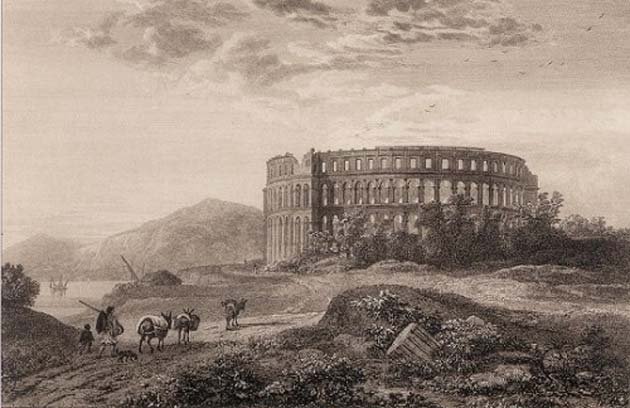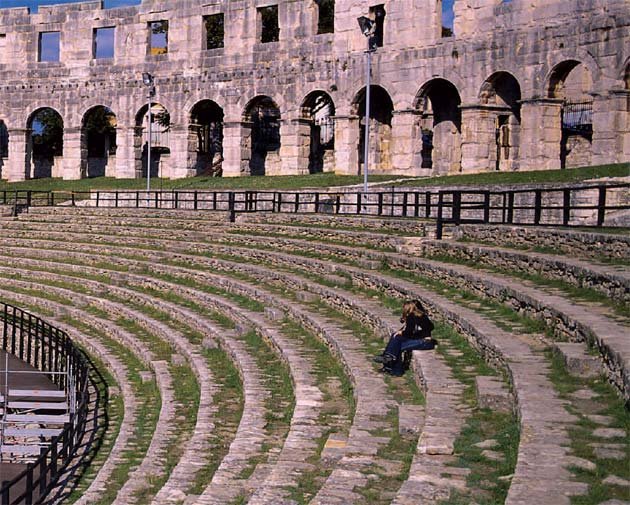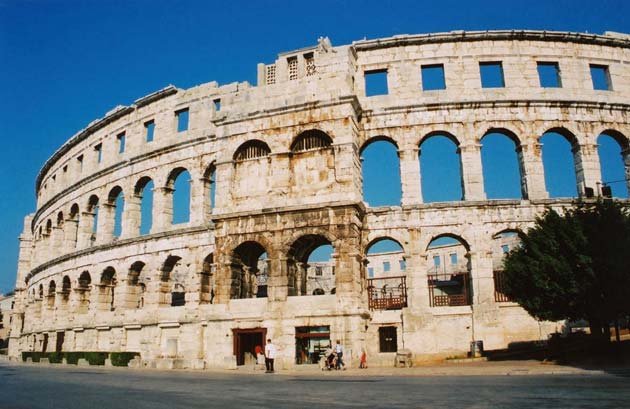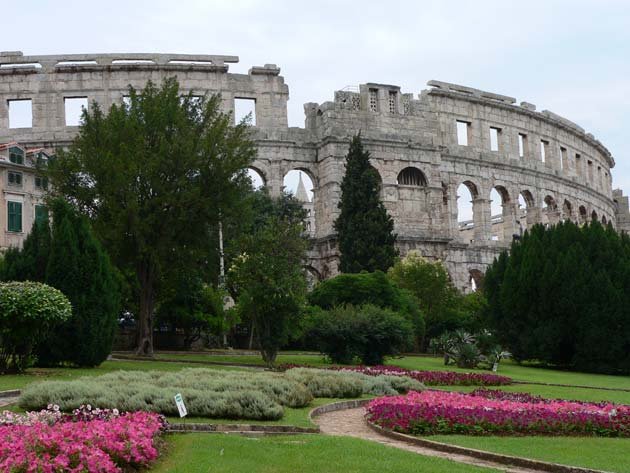
It is generally acknowledged that the Colosseum in Rome is the most exquisite engineering of the Romans, and no doubt the largest amphitheater ever built. The very thought of the deadly games held in it, and the crowd that shakes with excitement, visitors can return through time and for a moment to spell the power that the Roman Empire had at that time.
The Roman Coliseum, an ancient circus of death and glory, is a symbol of modern Rome and the Roman Empire. But on the other side of the Adriatic Sea stands equally impressive and magnificent buildings - the Arena in Pula (also known as "Pulska Arena" or the Pula Amphitheater).

The visit to Pulska Arena will cause almost the same feeling as visiting the Colosseum, except that you can still attend the events in Pula - and indeed be part of the audience.
Unlike the Colosseum, the most preserved classical building in Croatia has remained a place for entertainment until today. Whether you want to listen to music, watch opera or dance, or attend the Pula Film Festival, which has been held in the Arena since 1954, the Pula Arena will not leave you indifferent.
Pulska Arena is described as the world's most beautiful cinema, and sometimes it is difficult to imagine that the games of death and the blood in it once held.


It was built at the same time as the Colosseum in the 1st century, and the sixth amphitheater in the size of the Romans erected at their power centers (about 200 amphitheatres). Another thing that distinguishes this amphitheater is the oluk that collected rainwater and put it in four tanks. Then they poured perfume into them, and the smell of water scattered through the audience.
As you wander at Pulski Arena, you will be returned for centuries back through time, but you will only become fully aware that it was once an extremely violent place when you reach the dark rooms below, where martyrs and animals were "executed" after performance.

Thank you for reading! If you like please upvote, resteem and follow @krispee